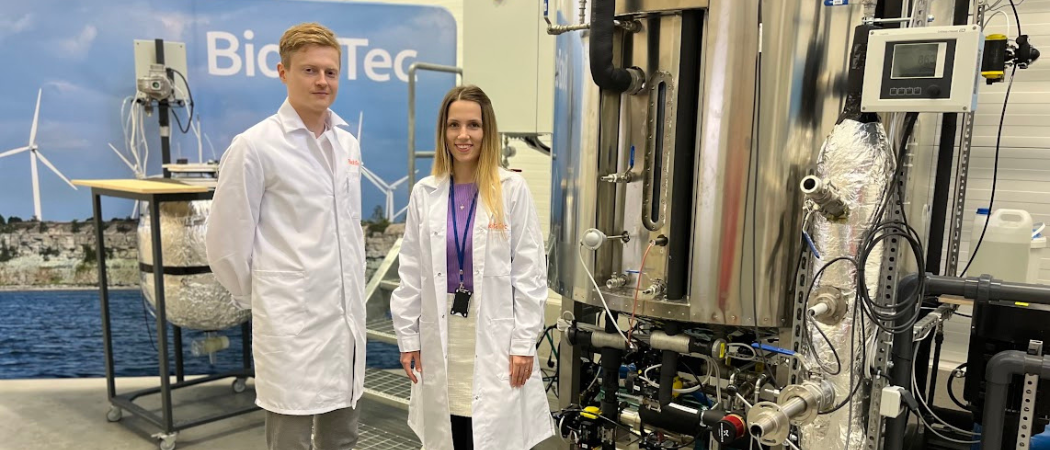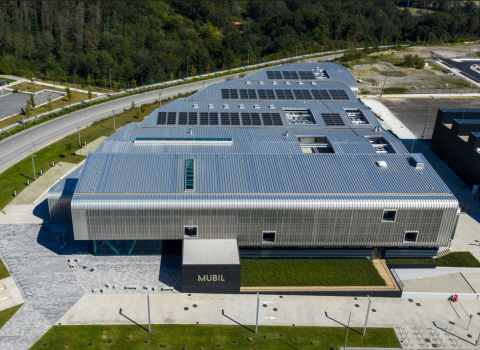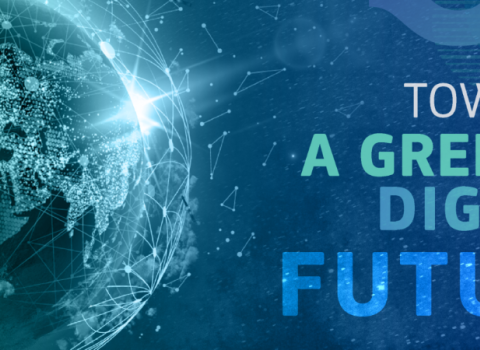Recent supply shocks have exposed Europe’s dependence on imports of essential resources. Estonia is aiming to overcome this by developing new techniques for extracting raw materials from overlooked or under-exploited domestic sources

Two team members of Estonian company BiotaTec, which is pioneering new biomining technologies to extract critical materials from low-grade ores and wastes
Estonia might be a ‘micronation’ of around 1.3 million people, but in common with the rest of Europe it has unexploited natural resources that could enhance its own - and the EU’s - energy and resource security.
The key to doing this is to look beyond traditional methods and develop new techniques for extracting essential materials from what are currently overlooked resources, according to Tiit Lukk, vice rector for research at Tallinn University of Technology (Taltech).
Lukk pointed to several examples, such as oil shale, graptolitic argillite and wood, that through the development of innovative extraction and processing techniques, could help fill the resource gap, at the Science|Business annual Widening conference in Brussels last week.
Some of these resources are thought of as lower value materials – they are not on the European Commission’s list of 34 critical raw materials that are deemed to be of high importance due to economic or supply reasons.
But for Lukk, they can still play a role. “The world is running low on rich ores, but technologies going after the poor ores are not that efficient yet,” he said. “I don’t think we have any other choice really than to go after these, for the resilience of Estonia,” he said.
With around 50% of Estonia covered by forests, wood is a significant resource in its own right. But the forestry industry leaves behind residues, for example, clean wood chips that are leftovers from the plywood industry and for which there is no other market. Fibenol is an Estonian company that is advancing a process for breaking down this wood residue, and, in the future, also paperwood, to extract materials that can be used instead of fossil fuel-derived materials in products ranging from bioplastics and adhesives, to bulk chemicals and cosmetics.
The company has a demonstrator and plans to build its first full-scale plant by 2028. From there, it hopes to build four more plants around the world by 2035.
Its goal is to replace fossil fuel-based products with biomaterials. “It is important for all countries, including Estonia, to learn how to better valorise local resources,” said Andres Maser, sales manager at Fibenol. “We want to have independence from fossil fuel-based feedstock.”
Another example is BiotaTec, which has developed bioleaching technologies to extract critical metals from low grade ores and mining waste. It is applying this to extract metals from graptolitic argillite, an ore that contains low levels of uranium, molybdenum, zinc and vanadium. There are considerable graptolitic argillite reserves in Estonia - around 60 billion tonnes - but it has a high sulphur content, meaning mining spoil is acidic, and previously there was no environmentally-friendly and economically feasible technology for extracting the metals it contains.
But BiotaTec says its bioleaching technology addresses many of these issues and will make graptolitic argillite processing, “better accepted by local communities”.
Sirli Sipp Kulli, CEO of BiotaTec, said it is important for Europe and Estonia to exploit lower-grade deposits. As things stand, a successful energy transition is dependent on the import of critical metals from politically unstable third countries. As a result, “Local industries are forced to turn to lower grade ores and re-mine the wastes that have been put aside in tremendous piles, as not worthy,” she said.
Mineral resources
The government of Estonia has prioritised getting more out of mineral resources, wood and food, with the Estonian Research Council (ETAG) launching the €11 million ResTA programme in 2020 to fund 20 research projects for three years.
These were researching new techniques to advance the use of domestic resources, train new experts and to create links between scientists and companies.
Indrek Kõre, manager of ResTA, is optimistic it will feed into to future innovations, saying he is “positive it will lead to cooperation with companies”.
Two of the ResTA projects focused on phosphorite, an important source of phosphates for fertiliser, animal feed supplements and chemicals. Estonia has one of Europe’s largest reserves of this mineral, and phosphate rock is on Europe’s list of critical raw materials.
However, exploitation of these reserves is highly controversial: in the 1980s when Estonia was under the occupation of the Soviet Union, there were plans to open large mines and to draft in foreign workers. This led to a backlash, with environmental campaigners pushing back against this. The ‘Phosphorite War’ is considered to have been influential in Estonian citizens rising up against the Soviet regime in 1991.
Since then, very little if any research has been carried out on exploiting phosphorite. The opening of new mines is not in the pipeline, but Kõre said it was the right time to at least start researching the material.
Following on from ResTA, ETAG is preparing a follow-up, TemTA, to continue the research. TemTA will have a larger budget of €57 million with its projects running for five years. The winning projects will be announced some time in the second quarter of 2024, with 148 proposals submitted.
Oil shale
Oil shale is arguably the most important mineral to be found in Estonia, with the fossil fuel source accounting for over half of the country’s electricity supply. The Estonian government has set a target of stopping the use of oil shale in electricity generation by no later than 2035.
But currently, oil shale, and the production of shale oil for conversion to diesel and petrol is big business and a key plank of the country’s energy security, especially as Estonia tries to reduce dependence on imports from Russia.
Companies are looking for ways to make processes more environmentally friendly or to diversify. One avenue being explored by Enefit, a subsidiary of Eesti Energia, is to use waste plastics or old tyres in the pyrolysis of oil shale to shale oil.
Olga Pihl, a researcher at Taltech, wrote a doctoral thesis on this and believes it could be significant for the country’s oil shale industry and a boon to Europe as well.
“In Estonia, approximately 10 million tonnes of oil shale are processed annually. By adding at least 10% of waste […] it is possible to dispose of one million tonnes of waste without compromising the quality of shale oil,” she told Science|Business. By adopting this process, “Estonia could address its waste generation issues and potentially assist neighbouring European countries in mitigating similar challenges.”
This month, the EU agreed to the Critical Raw Materials act, intended to make it less reliant on imports of key materials. To achieve this, the EU’s internal markets commissioner Thierry Breton has said the EU must step up its capacity to extract, process, recycle, refine and separate its own materials.
There are concerns about the environmental impact of this. “There is often this mentality of not in my backyard,” Lukk said. “But the reality is that we’re in trouble pretty soon if we don’t start exploiting the resources that we have. We have to do it in a sustainable and environmentally friendly manner.”





 A unique international forum for public research organisations and companies to connect their external engagement with strategic interests around their R&D system.
A unique international forum for public research organisations and companies to connect their external engagement with strategic interests around their R&D system.